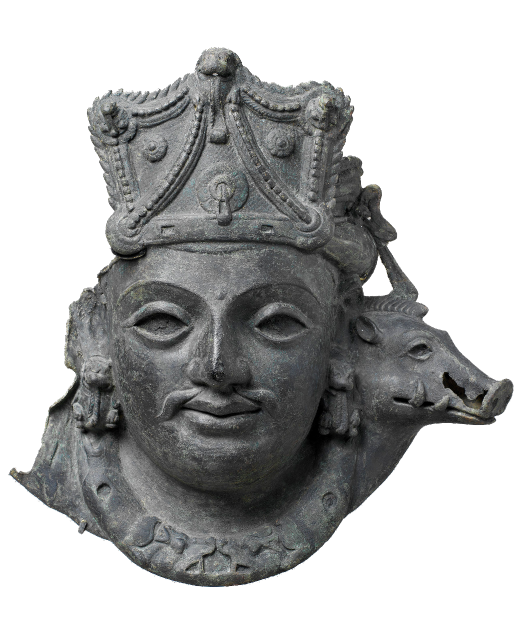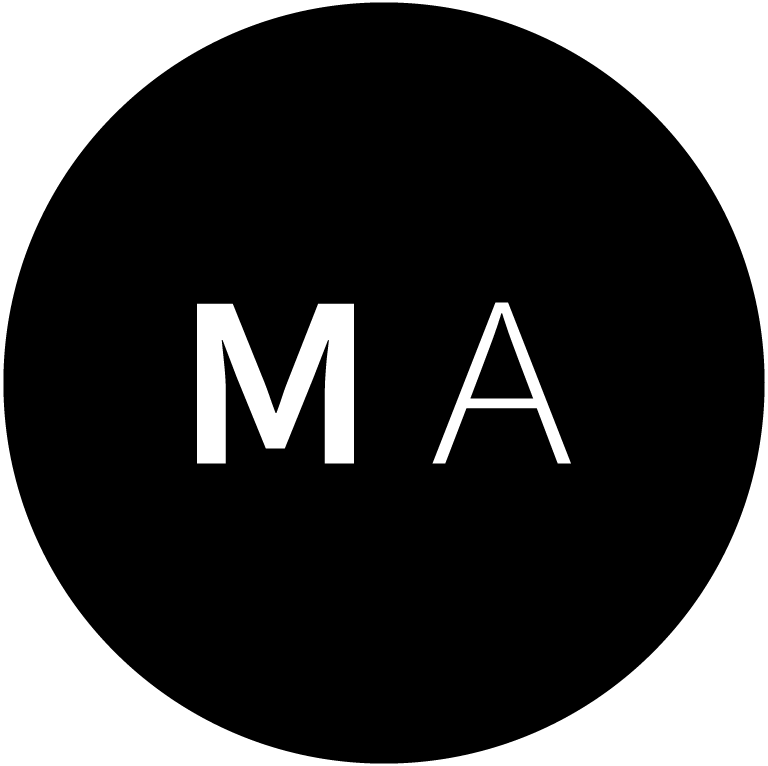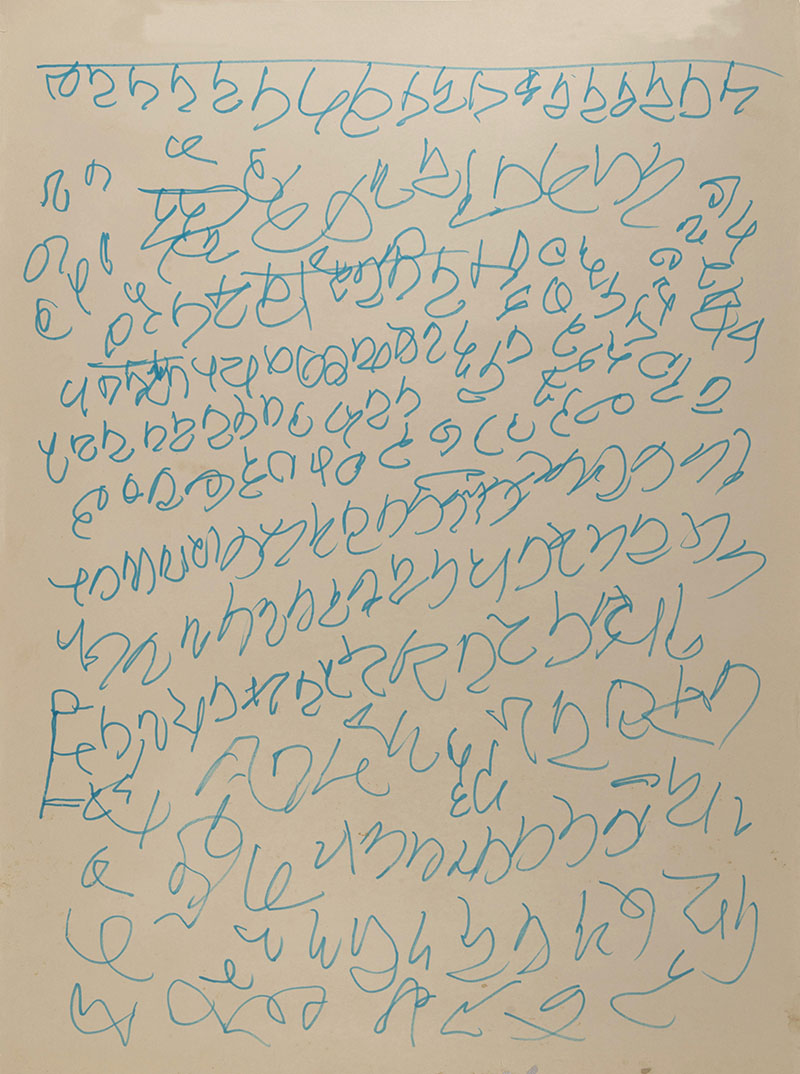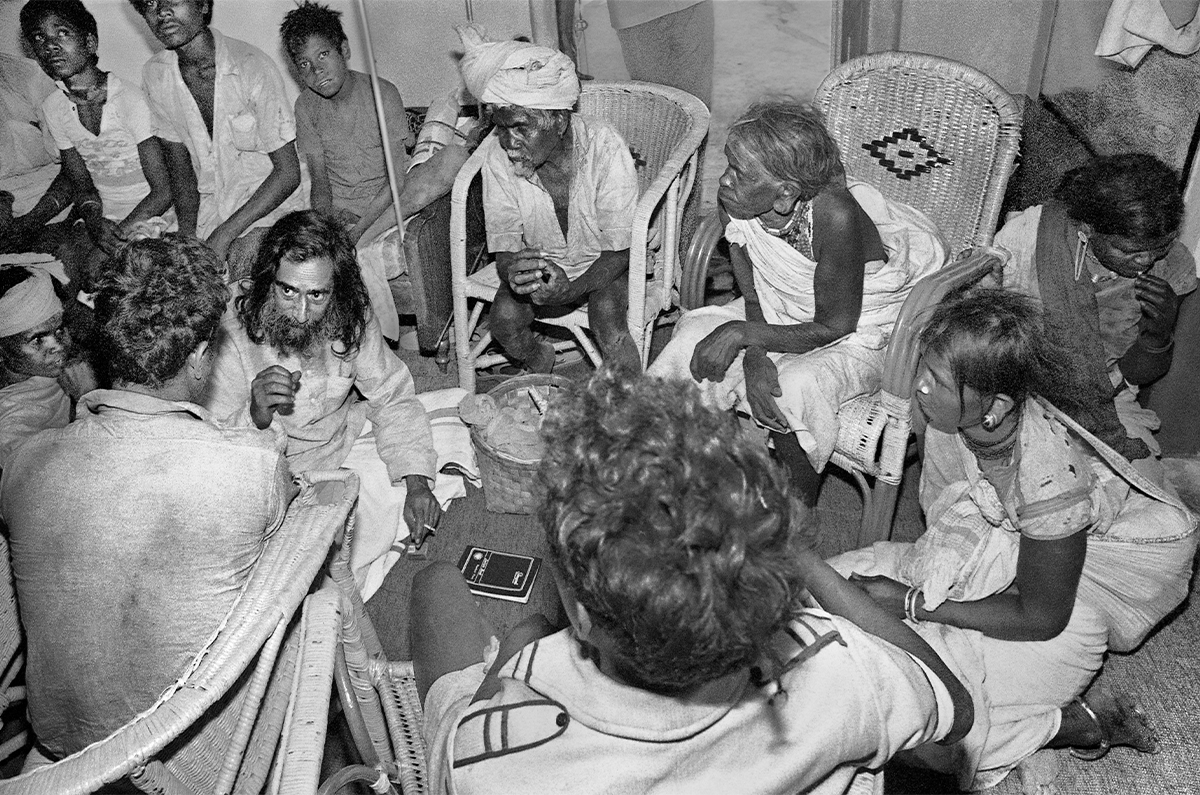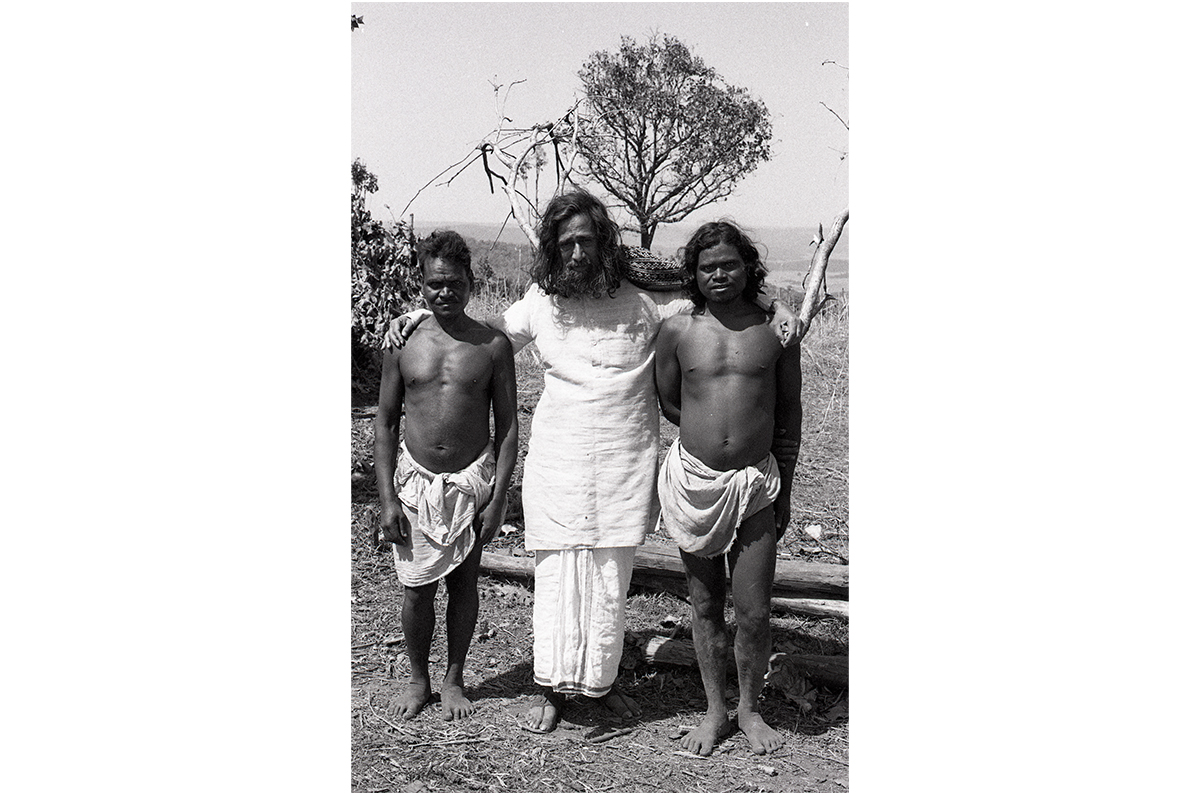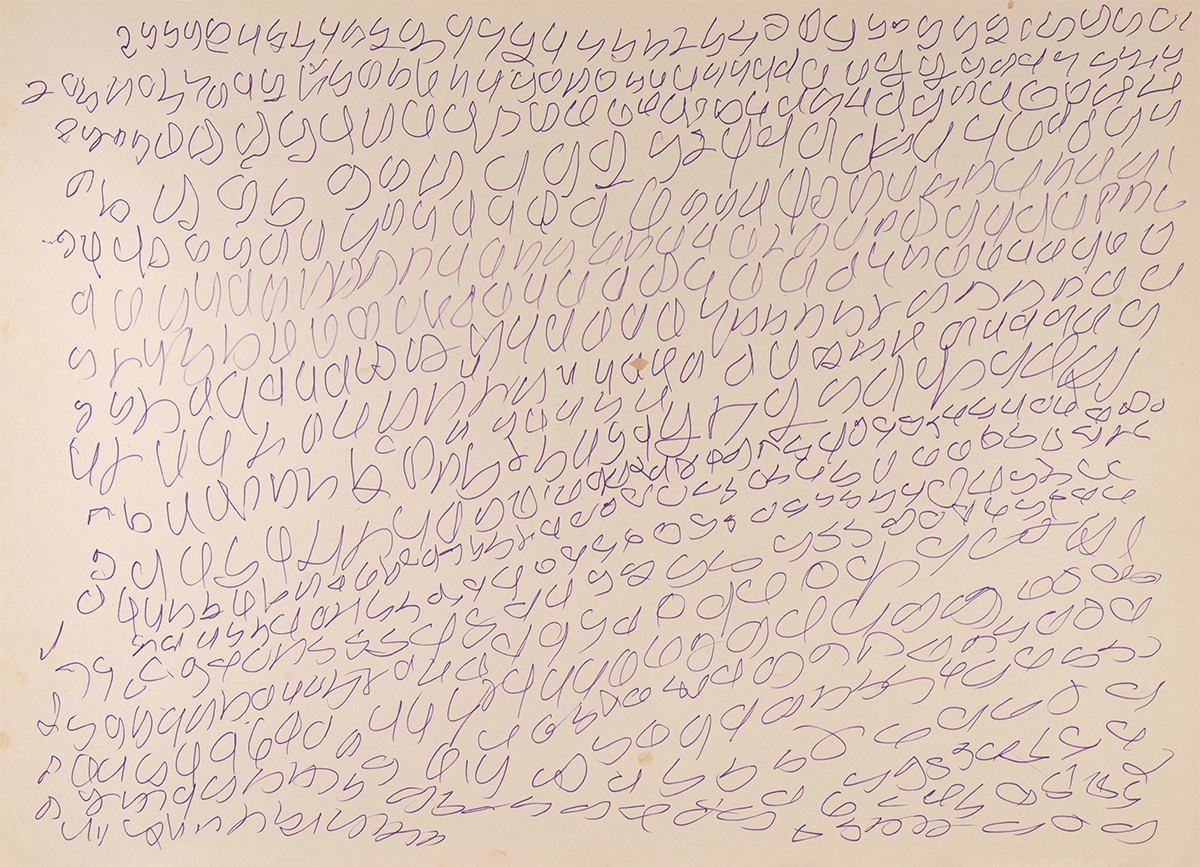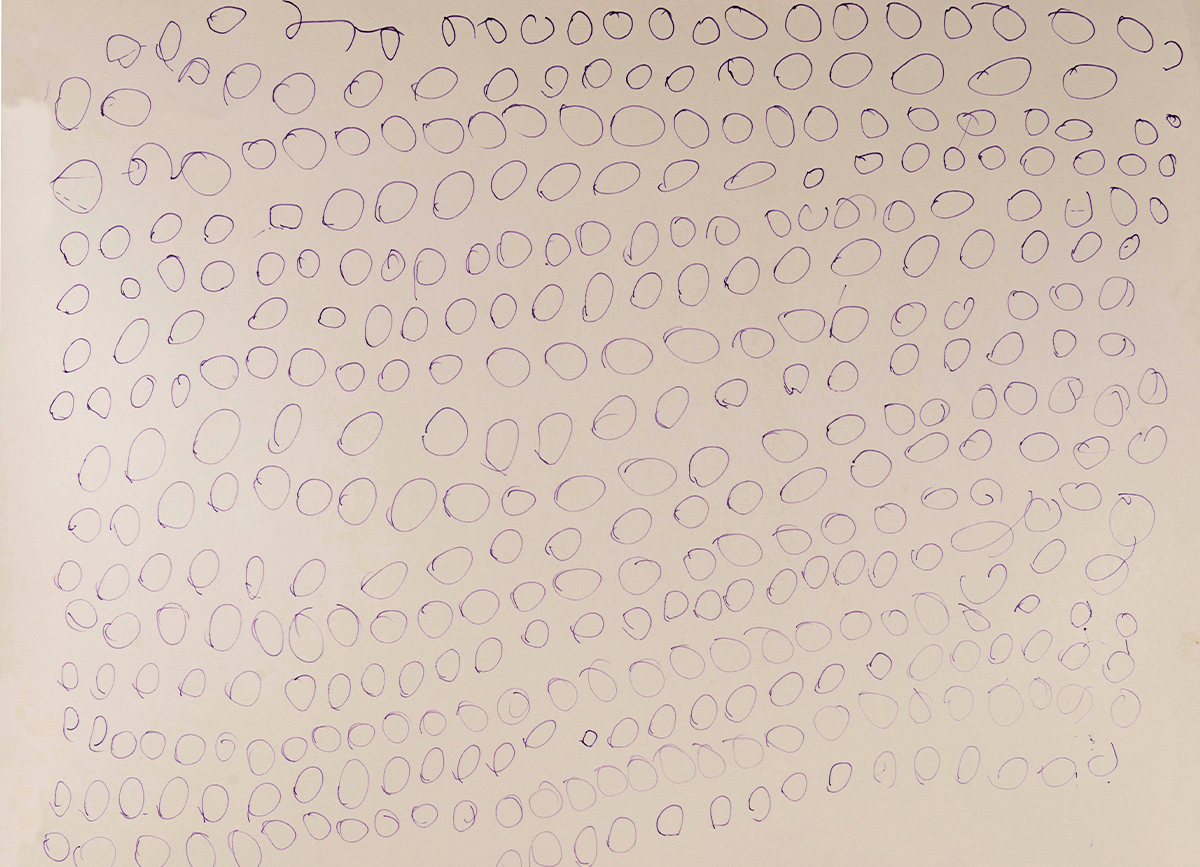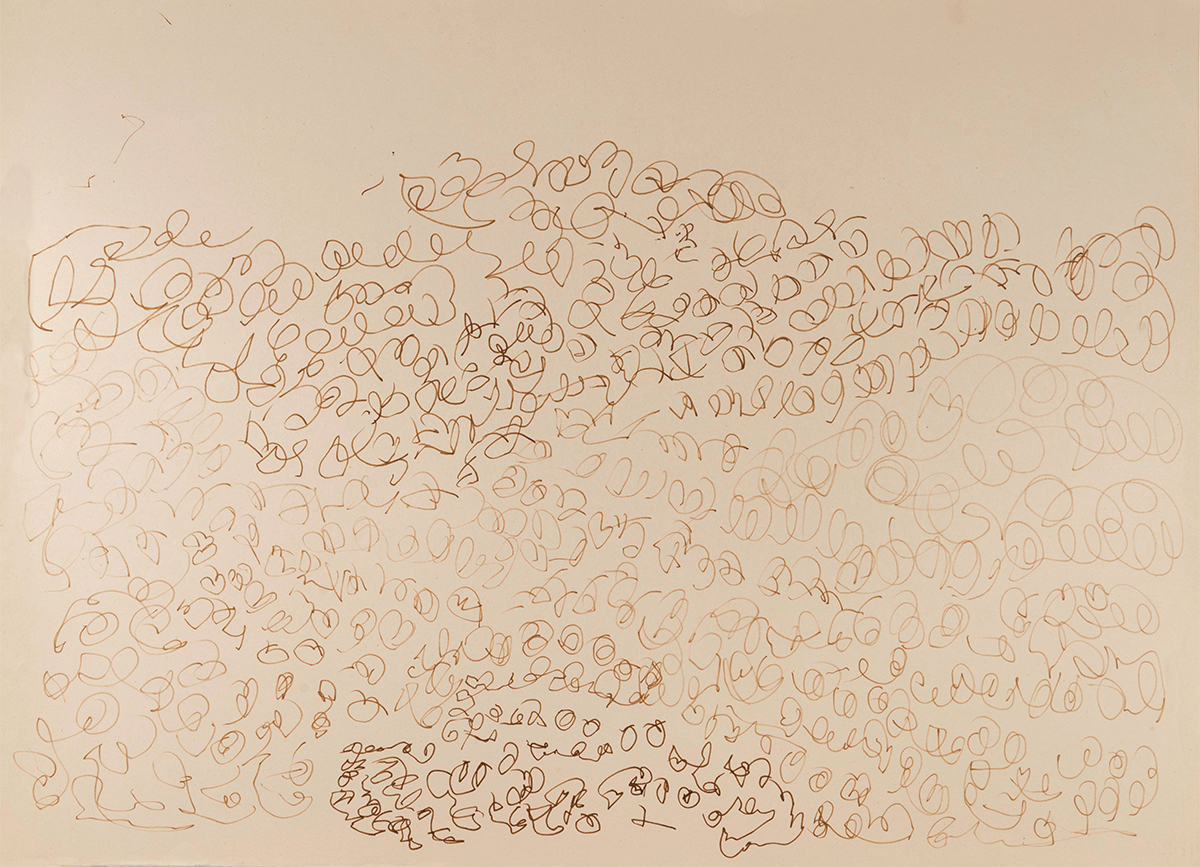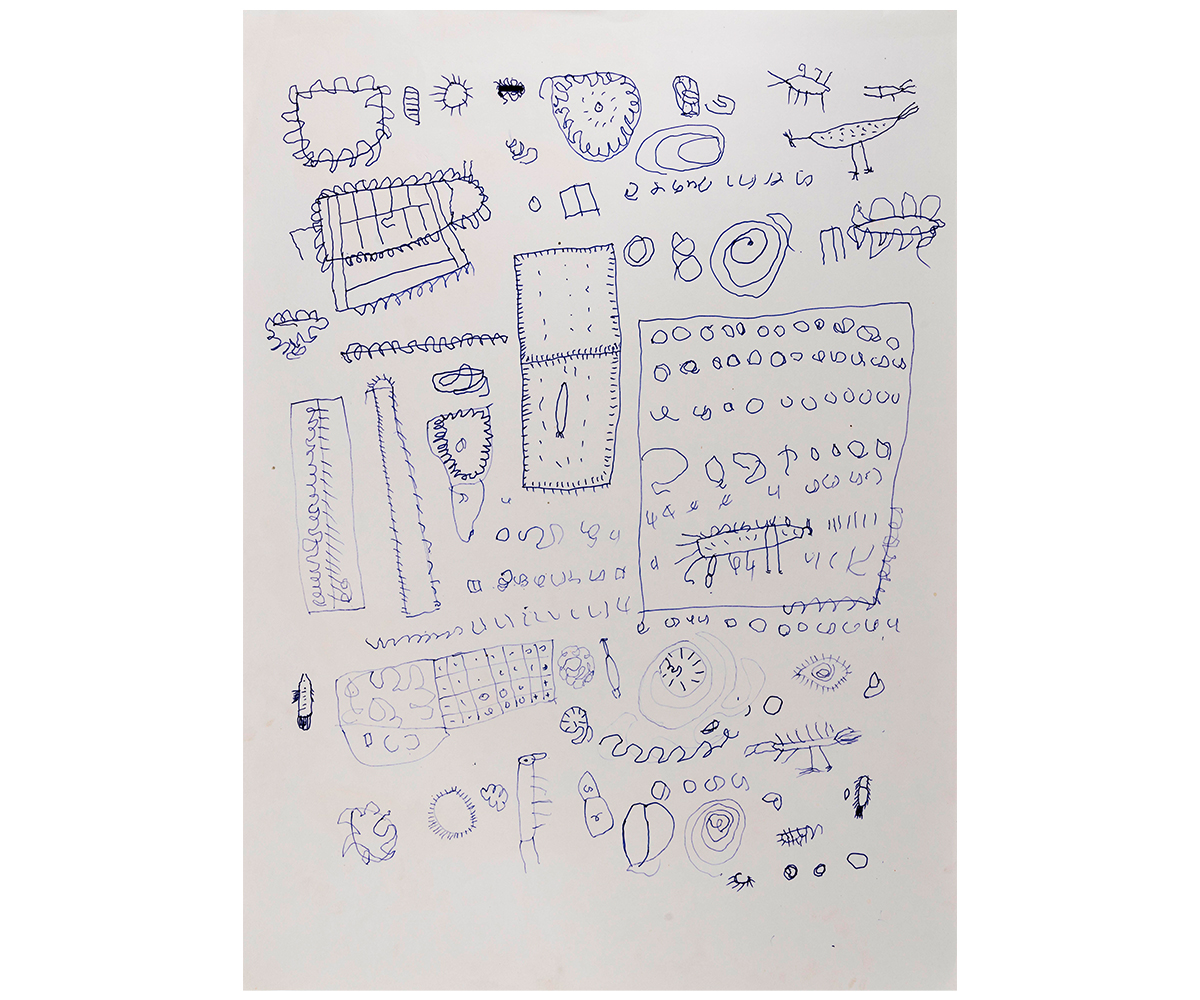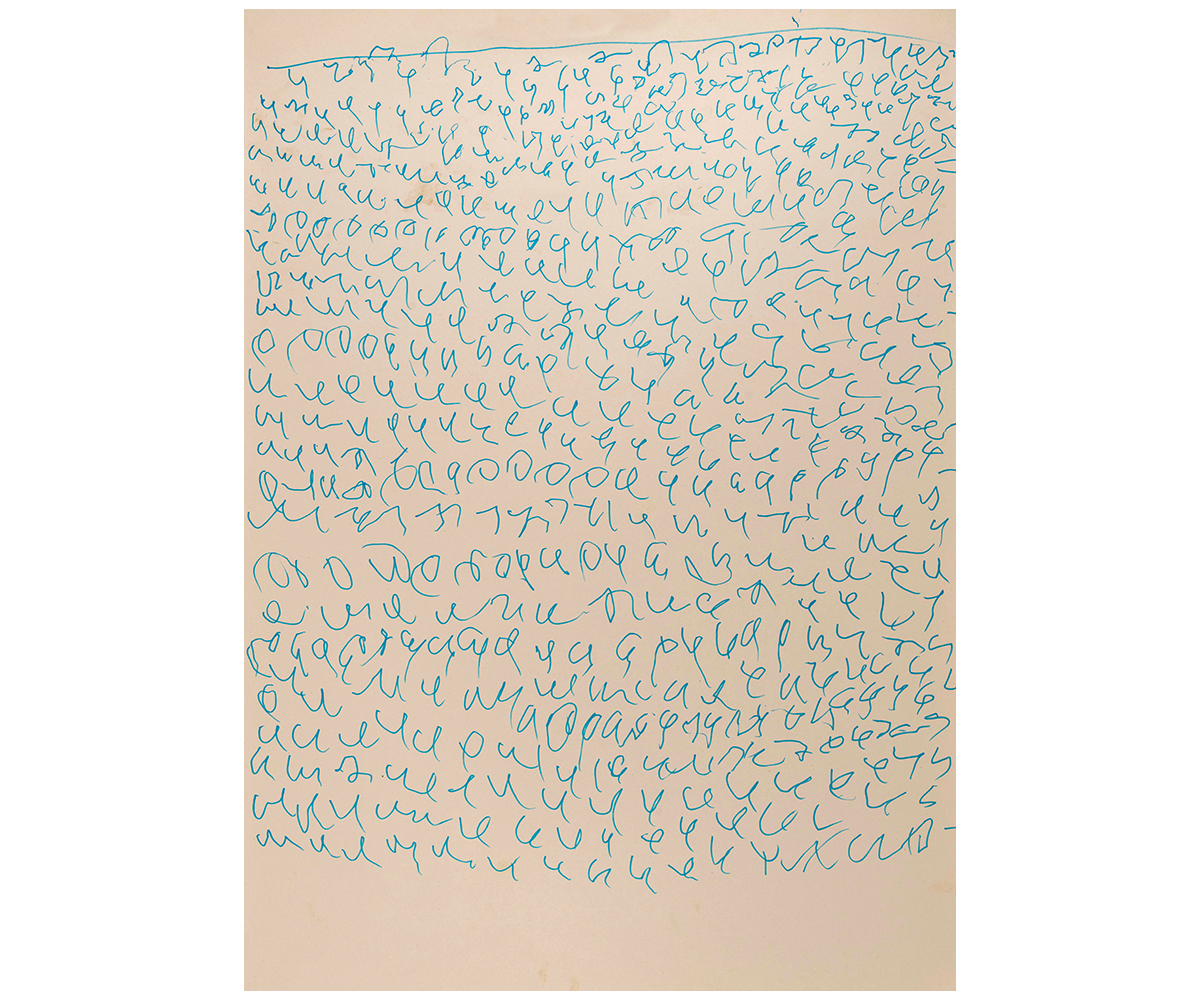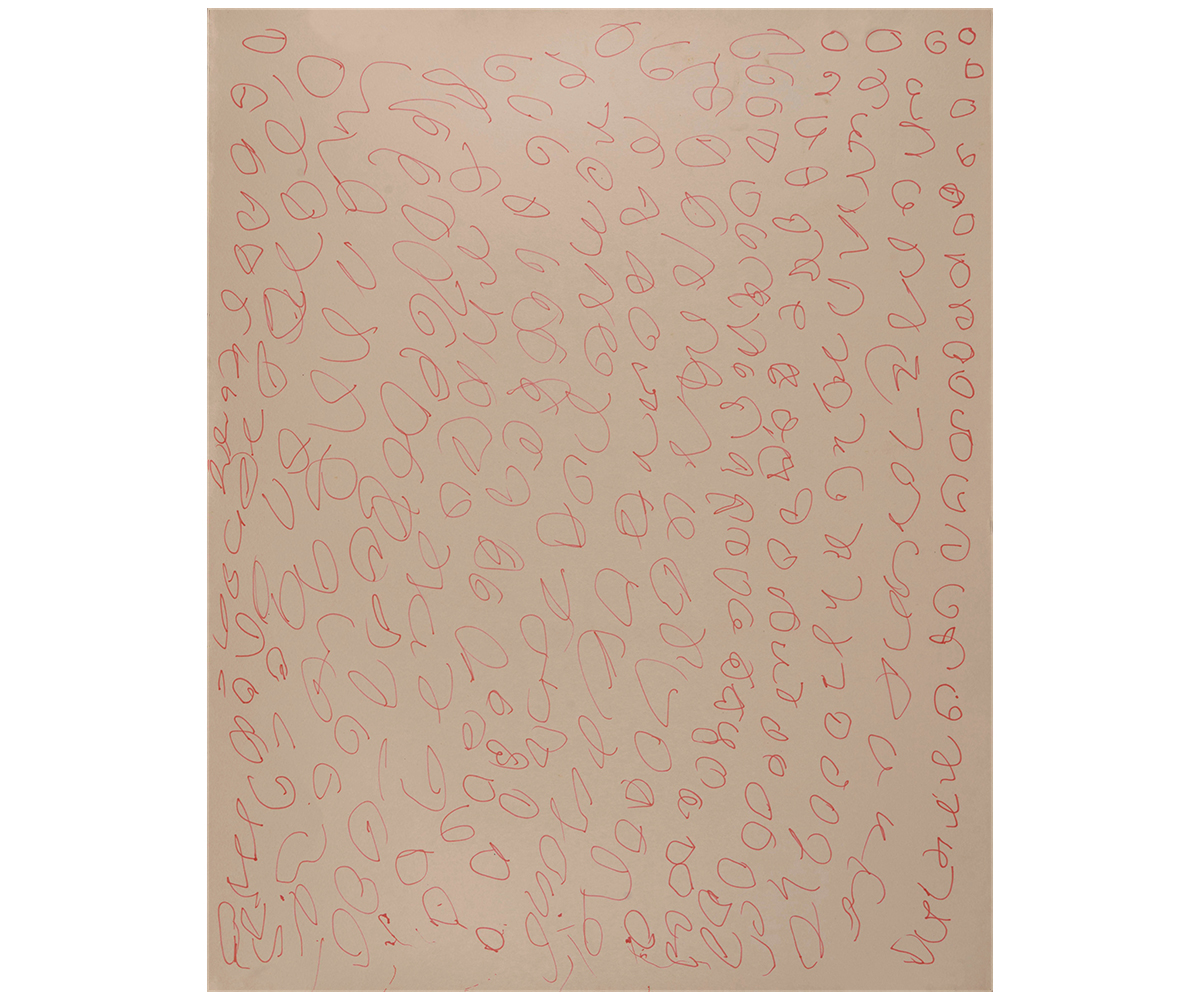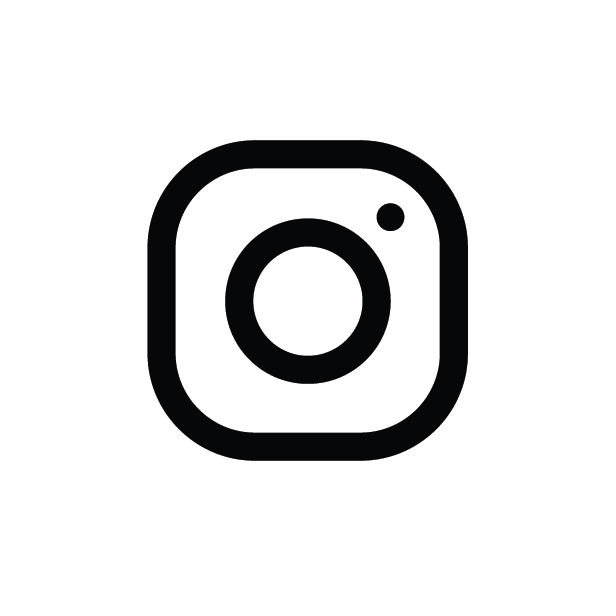ARTICLE
Korwa Drawings
Later the same year, Swaminathan wrote about the experience and published the drawings in his book The Magical Script. The drawings were exhibited at Bharat Bhavan in 1985. In 1996, Jamme came across the drawings there, and later travelled to the Pahadi Korwa villages, accompanied by a support team including a translator, to collect more drawings in a similar exercise. These, along with the drawings made in 1983, form the complete extant collection of Korwa drawings today.
Visual characteristics
The Korwa drawings mostly comprise small curving lines that repeat, with slight variations, in defined, rhythmic compositions or patterns, forming rows, loose blocks, or masses resembling trees or clouds. Most use black ink on white or light paper; some are in colour. While there are sometimes recognisable pictograms, most often of bows and arrows, the marks are largely abstract.
The drawings do not resemble or draw from any known visual idioms of the Korwa, and appear instead to have emerged as unique results of the people’s encounter with Swaminathan and then Jamme. Though the forms do not belong to any known script, they sometimes resemble characters of the Devanagari script, used for Hindi and other languages of northern and central India — largely due to a line connecting the tops of many forms. The Korwa language does not have a script and the Pahadi Korwa are largely illiterate, but given the ubiquity of Hindi in the wider region for official and everyday use, they regularly encounter the script in printed matter and signboards.
Interpretations
Little of what the Korwa artists thought of their drawings has been recorded; one artist is known to have described his work as a report of his people’s sufferings to the government. The drawings’ script-like quality, paired with the absence of recognisable semantic content or syntax, has often been the focus of their interpretations. These include discussions about the distinction between script and image, and speculations about whether the drawings express the artists’ aspiration to literacy.
Readings of the Korwa drawings often reflect assumptions and perceptions of Indigenous cultures prevalent in mainstream society: Swaminathan and Jamme, for example, saw them as expressing an innocence and purity of experience free from the restrictive knowledge and representation systems of dominant civilisations. The creation of the drawings is often described as ecstatic or spontaneous rather than conscious or intentional. For Swaminathan, the drawings carried a ‘magical significance’ and suggested the Korwa’s perception of the numinous power of written language; both Swaminathan and Jamme considered the drawings visually distinct enough to be seen as works of art. They also drew parallels with the Abstract Expressionist work of some twentieth-century artists, including the Indian painter Ambadas, the American painter Mark Toby, and the Belgian-French writer and artist Henri Michaux.
The Korwa drawings have been exhibited at Bharat Bhavan, where they are part of the Roopankar Museum’s permanent collection; the Galerie du Jour and the Grand Palais in Paris; and The Drawing Center in New York. The works of some who had been especially prolific, such as Lajamo Korwa, Lahangi Korwa and Ukhai Korwa, are also housed in various other collections both in India and abroad. The drawings also appear in publications such as the anthology Writing on Air (2003) — containing an essay on the drawings by Jamme — and Indian Contemporary Art: Contemporary, One Word, Several Worlds (2012). The collection of the Museum of Art & Photography, Bengaluru, also houses several Korwa drawings
Bibliography
Das, Laboni. “Trends of Change among the Particularly Vulnerable Tribal Group: An Account of the Hill Korwas of Chhattisgarh.” Journal of Adivasi and Indigenous Studies (JAIS) 10, no. 1 (2020): 87–96. https://joais.in/Journal/6.%20Laboni%20Das,%20Hill%20Korwas%20of%20Chhattisgarh%2087-96.pdf.
Deogaonkar, Shashishekhar Gopal. The Hill-Korwa. New Delhi: Concept Publishing Company, 1986.
Jamme, Franck André. “The Mystery of the Hills.” In Writing on Air, edited by Rothenberg, David, and Wandee J. Pryor. Newark: MIT Press, 2003.
Modesti Perdriolle Gallery. “Hill Korwa.” https://www.modestiperdriolle.com/hill-korwa.
Swaminathan, Jagdish. The Magical Script. Bhopal: Bharat Bhavan, 1983.
Swaminathan, Jagdish (ed.). The Perceiving Fingers: Catalogue of Roopankar Collection of Folk and Adivasi Art from Madhya Pradesh, India. Bhopal: Bharat Bhavan, 1987.
de Zegher, Catherine, and Franck André Jamme. Korwa Drawings. New York: The Drawing Center, 2009. https://drawingcenter.org/bookstore/books/dp-013-korwa-drawings-regular.
